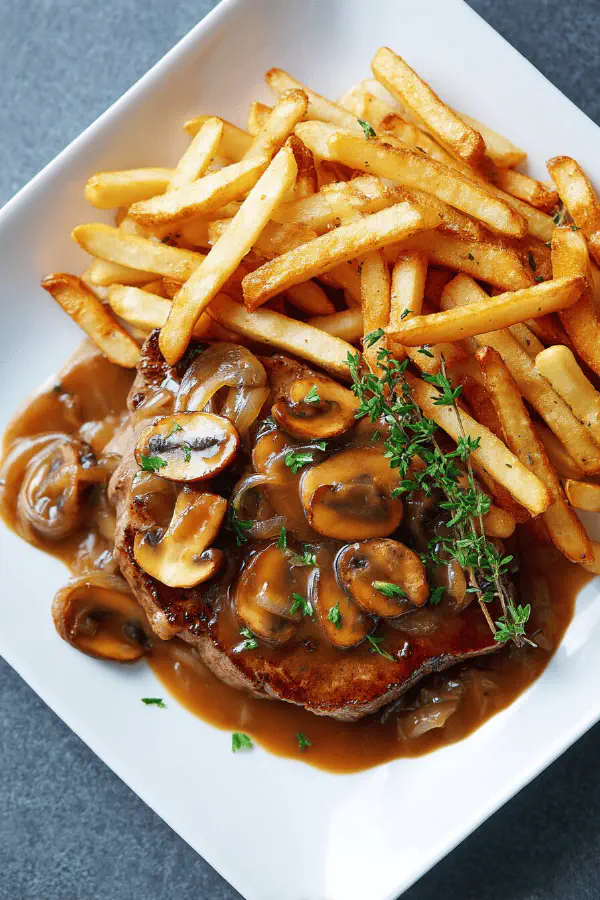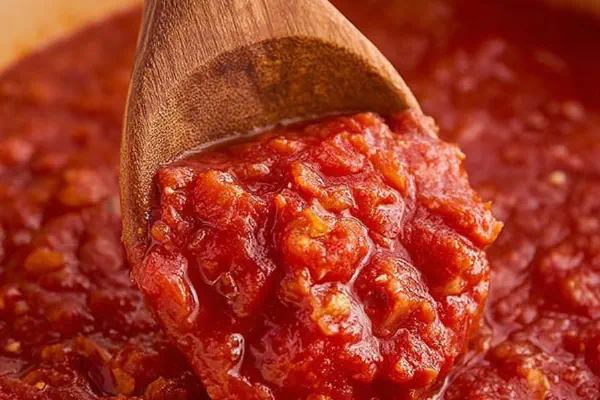Featured Recipe
Quick Brown Gravy Twist

By Kate
"
Brown sauce using caramelized shallots and garlic for depth. Beef and mushroom stock replace traditional bouillons. Toasted whole wheat flour thickens, adding nuttiness. Caramel color and rich aroma develop as mixture simmers, gradually thickening. Smooth texture achieved by whisking and straining before serving. Suits roasted meats and poutine with an earthy lift. Efficient, no-fuss approach with notes on browning, coating flour well, and managing clumps.
"
Prep:
15 min
Cook:
20 min
Total:
35 min
Serves:
4 servings
gravy
sauce
French-Canadian
poutine
Introduction
Sauce brown but not bland. Caramel notes come from slow-browned shallots not onions; more subtle, less sharp. Garlic bite low, just background punch. Butter replaced with clarified butter or oil to prevent burning since lower milk solids. Stocks swapped — mushroom plus beef — add earth, deeper color, savory umami hits. Toasted whole wheat flour thickens smoothly and adds texture layer, nuttiness. Whisk constantly through flour addition; no clumps, no lumps. Strain for glossy finish. Keeps thick but not gluey. Serve right away or rewarm gently. Good splash on meat or layered fries with cheesy curds. Technique, timing, watch heat: all count. Burn flour, sauce bitter. Miss caramelization, faint flavor, weak color. Watch, listen to bubbling, smell: your guide.
Ingredients
About the ingredients
Shallots not onions; softer, sweeter, caramelize slower, better for deep sauce without harsh edges. Garlic minces fine for even gentle flavor. Clarified butter preferred for higher smoke point; olive oil keeps it cleaner in hot pan. Mushroom stock concentrate blends subtle vegetal notes with beef’s beefiness—sub for both with good quality beef stock plus a handful mushrooms simmered and strained if needed. Toast flour on dry pan—dry roasting brings out nutty aromas, no raw flour taste, and color that deepens sauce. Whole wheat flour adds depth; can substitute with spelt or rye flour for similar effect. Avoid white flour without toasting or the sauce turns pasty and dull. Stock concentrates measured exactly for consistent saltiness; adjust after tasting.
Method
Technique Tips
Medium-high heat start for butter melts clean; shallots and garlic start to sizzle immediately, giving auditory clue. Stir often to avoid uneven browning and quick burning edges. Caramelization slow but consistent. Once golden edges form, move on—don’t wait too long. Add stocks cold for sharp flavor contrast, bringing immediate volatility—key for lifting those aromatics more. Whisk flour in gradually, constantly, feels thickening, slow gains viscosity. Lower heat right away to prevent scorching. Simmer slow 4 to 7 minutes; bubble should be gentle, not furious. Taste before salt adjusts—stock concentrates make sauce salty already, careful. Strain for final smoothness; coarse bits ruin mouthfeel. If clumpy, whisk vigorously, simmer longer, or add slurry as rescue. Sauce too thin? Reheat, reduce, never add thickening raw at end. Serve warm; reheating gentle only or thickening breaks down. Practical tip: make flour roux batch separate, cool. Store dry toasted flour for quick gravy patches mid-service.
Chef's Notes
- 💡 Start with medium-high heat. Melt clarified butter, olive oil. Toss shallots and garlic. Stir often and listen for sizzle. Look for amber edges. Smell for caramelization.
- 💡 When adding stocks, cold is key. Immediate aromatic response, bubbling surfaces signal strong flavors release. Sprinkle toasted flour gradually, whisk constantly.
- 💡 Simmer. Not furious bubbles. Gentle, glossy sheen indicates thickening. Season carefully. Taste salt; stock is often salty. Swirl it well to blend.
- 💡 If too thick, thin with warm water or stock. Gradually and whisking. Too thin? Boil to concentrate. Or a smooth slurry—for quick fix. Watch heat—burnt flavor ruins sauce.
- 💡 Store toasted whole wheat flour for quick fixes during service. Make roux in advance. Use good stock for best flavor. Toasting flour is crucial, deepens aroma.
Kitchen Wisdom
How to adjust thickness of sauce?
Too thick? Gradually whisk in warm water, stock. If too thin, quick reboil to reduce—tighten flavors fast.
What to do if sauce is lumpy?
Whisk vigorously. Simmer longer, or whisk in slurry. Strain if necessary. Clumps ruin texture, avoid raw flour taste.
Can I store gravy?
Refrigerate few days. Reheat gently, whisk to reintroduce smoothness. If too thick after cooling, thin as needed.
What's the best way to achieve that deep flavor?
Caramelization is key. Watch for amber edges, subtle aroma. Don’t rush, patience pays off.



